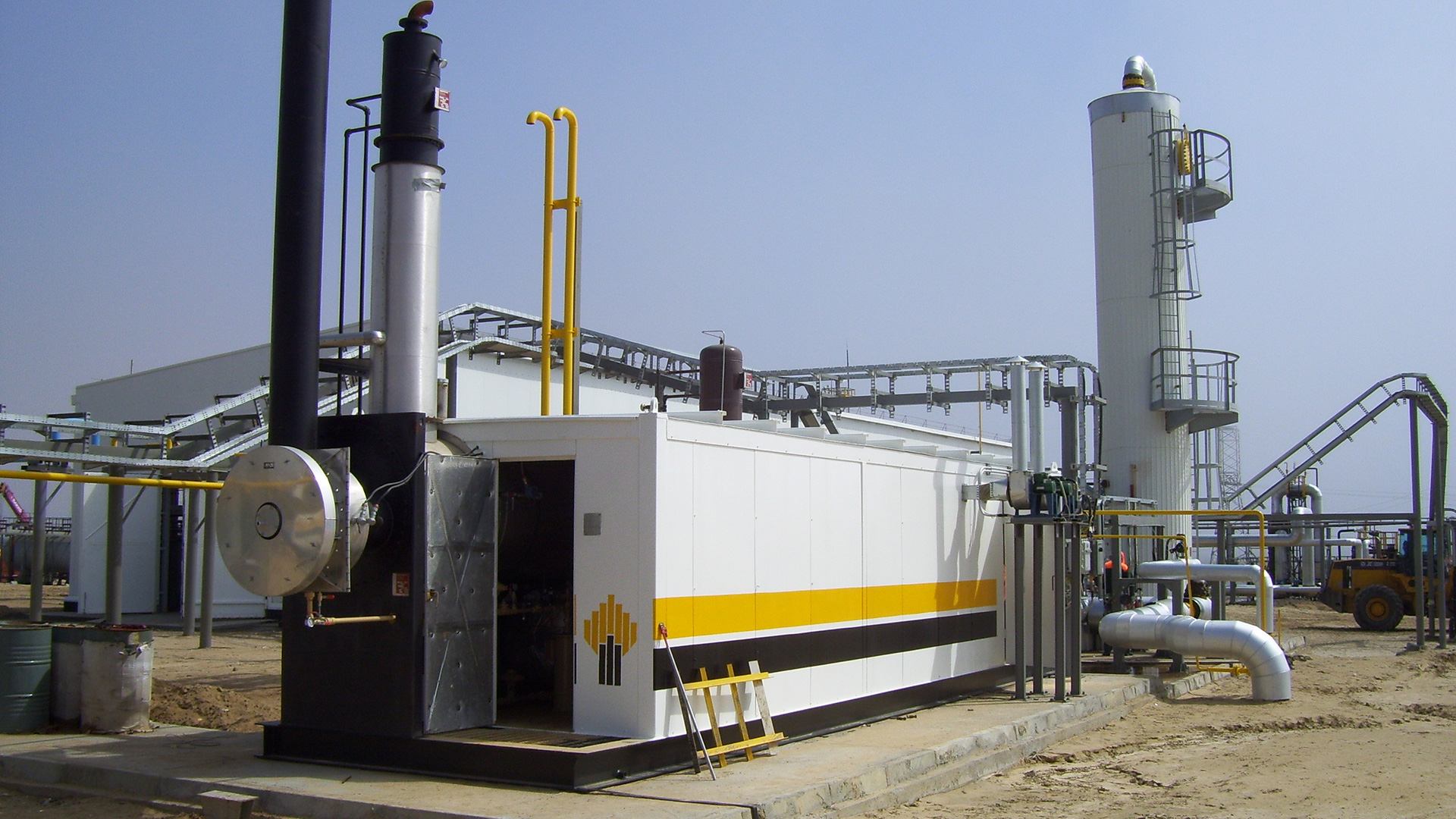Gas dehydration
Gas dehydration is a process of extracting moisture out of natural gas and gaseous mixtures. It often precedes either a pipeline transportation of gas or a low temperature based gas processing.
So why it is so important to dry the gas?
By drying we imply removal of moisture or dehydration. Water moisture content is present in every gas. It is the quantity of that content that differs. Most of the raw or feed untreated gases are saturated with moisture — i.e. they hold maximum content at specified pressure and temperature. It is worth noting that we’re not talking about free water — drops flying in with the gas that is easily removed in the mechanical separators. Instead we’re referring to water vapor, that requires more sophisticated processes to be applied.
Dehydration allows for continuous use of downstream process equipment and pipelines by reducing the risk of hydrates cooling down and forming ice plugs in the pipelines. Most of the dehydration methods are based on either absorption or adsorption of moisture or on its condensation during cooling of the gas. The most important characteristic of the dehydrated gas is its water dew point (measured in deg C or deg F just like temperature).
- Absorption method is dehydration using liquid capturing agents
- Adsorption method is dehydration using solid capturing agents
Gas dehydration methods
Gas can be stripped of water, just like of any other component, by either a physical method (adsorption or absorption, membranes, condensation while cooling the gas media) or a chemical one (CaCL2 and others) and hybrids of the two above.
Most commercially viable methods are listed below from the most prolific to rarest:
- Absorption — Glycol drying
- Adsorption — Zeolites, silica gels or activated aluminum powder
- Condensation — Cooling with injection of hydrates inhibitors (glycols or methanol)
- Membranes — Based on elastomer or glassy polymers
- Chemical method — Hygroscopic salts usually metal chlorides (CaCL2 and others.)
The first two dehydration types make up an overwhelming majority of gas dryers in the world.
Absorption (Glycol dryer)
Glycol dryer is the most prolific method of dehydration utilized for a moderate moisture removal. This makes the feed gas appropriate for pipeline transportation (including main gas pipelines). It is also used to turn the feed gas into fuel gas.
Typical glycol dryers comprehend reaching the water dew point of the treated gas to as low as −10°...-20° С.
There are of course more advanced glycol dryers — they are also more expansive as well. They are usually referred to by the names of their original patent holders, such as Drizo, Coldfinger and so forth. These are capable of reaching water dew point temperatures as low as −80° С.
Advantages of absorption method:
- Pressure differentials across the unit are comparatively low
- Low operational expenses
- Capable of treating feed gases with a high content of particle contaminants that ruin solid sorbents
Disadvantages of the absorption method:
- The treated gas temperature has to be above 40° С
- Moderate level of dehydration
- Possible foaming of sorbents
Typical equipment set up
Standard glycol dryer consists of two main blocks\skids:
- absorber of either plate or nozzle type
- glycol regeneration
Adsorption
Adsorption gas dehydration is generally used to reach further dehydration levels (water dew point temperatures as low as −40°...-100°С) as a part of cryogenic processing plants. One of the benefits of this method is the ability to cleanse the feed gas from a whole range of contaminants (hydrocarbons, sour gases, etc.) besides water dew point control. One has to bear in mind that this multi-purpose treatment is only possible when low — trace — concentrations of contaminants are present.
Advantages of adsorption method:
- Exceptional service life of adsorbent
- High depression of the low water dew point level can be reached across a wide process parameters scenario
- The quality of dehydration is hardly affected by changes in temperature and pressure of the feed gas
- Simple and reliable process
Disadvantages of adsorption method:
- Large capital expenses
- High operational expenses
- Adsorbent is prone to contamination which requires frequent cleaning and may lead to a replacement
- Failure to reliably provide an uninterrupted production cycle
Typical equipment set up
A standard adsorption unit may consist of the following blocks:
- two-four adsorption columns with granulated adsorbent
- the adsorbent storage
Less frequent dehydration methods
Condensation, membranes and other methods are also capable of complex cleaning of the gas, but they are used to generally clean the raw feed gas from the mass of unwanted contaminants. In this regard, adsorption is a fine method of treating the gas, while condensation and membranes are a raw method.
Condensation is typically used when a mild water and hydrocarbon dew point levels are required (0...-20°С); membranes are generally the same apart from being able to remove some of the acid gas component as well
Examples of the water dew point levels in various gases
GazSurf is capable of designing, building and supplying on “turn-key” basis any type of the gas dehydration system as a modular skid set up to suit your needs.





